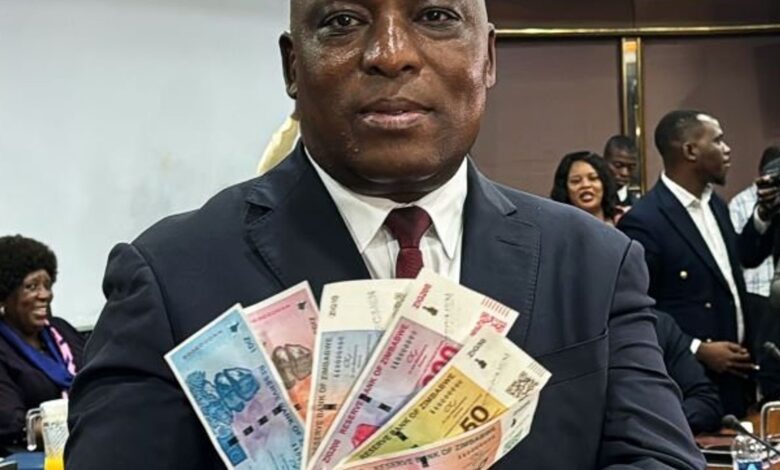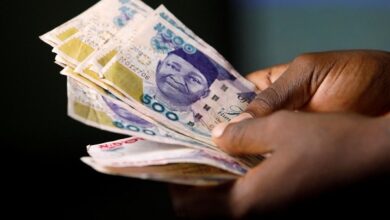Zimbabwe’s New Currency is Failing to Inspire Trust Among Citizens

Many Zimbabweans today are having a hard time paying for goods and services with their local currency, the Zimbabwean dollar. Most transactions in the country are carried out with the U.S. dollar, while change for items and services like transportation fares are usually issued in local currency. Now, the introduction of a new currency, the Zimbabwe Gold (ZiG), has put citizens on high alert.
The ZiG is already in limited digital operation but will only be in physical circulation from the end of this month. This new currency is the latest attempt at stemming hyperinflation that has rocked the southern African country for over 15 years, greatly devaluing the series of redenominated currencies introduced since 2008.
Backed by over 2.5 tonnes of gold, precious minerals equivalent to 0.4 tonnes of gold, and $100 million in cash, the ZiG is being touted by the government to have the potential to reduce the overreliance on foreign currency in everyday transactions. However, the currency is already sliding in the foreign exchange black market without being accessible to the general public yet.
Late last week, official numbers stated that $1 was trading for ZiG13.41, but on the black market a dollar was as high as ZiG20. Still trading digitally only, trust in the new currency is far from high amongst locals, with many feeling like this is an all-too-familiar situation.
“Let’s wait and see,” Chamunorwa Musengi, a street vendor in the capital city Harare, told VOA News. “Maybe it will boost our economy for some time. But I do not see anything changing with the new currency, because things are really tight at the moment. We’ve been through this before. When they introduced bond notes, things stabilized for a short time and then it started sliding on the market. They are saying ZiG is around 13 — it will end up around 40,000 against the dollar.”
As Zimbabweans wait for the new currency to be in circulation, the local dollar is being widely rejected, which means transactions are being rounded up. For an item or trip that costs, say, $6.25, the person now most likely has to pay $7 and forfeit valuable change that’s worth about 10,000 in the current Zimbawean dollar (ZWL).
Even though the ZWL will still be legal tender for months before it’s phased out, many citizens don’t want to be caught unawares in case a bout of hyperinflation devalues the new currency and renders the outgoing one utterly useless. Over the last year, the ZWL lost 100 percent of its value against the dollar, a precedent that doesn’t inspire public trust.
In the late 2000s, the Zimbabwean dollar was redenominated three times, while hyperinflation soared to unprecedented rates. The currency lost half its value almost every day, even as the government issued 100 trillion more ZWL notes.
The instability made citizens lose a lot of money, deepening distrust for local currencies. By 2009, the central bank and the government officially approved the use of several foreign currencies as legal tender, including the South African rand, euro, British pound sterling and, most popularly, the U.S. dollar, amongst other currencies. The local currency was also suspended, leading to a consistent drop in the inflation rate, hitting 4.3 percent in July 2018.
Despite warnings, Zimbabwean president Emmerson Mnangagwa approved the reinstatement of the fourth dollar, currency code ZWL, about a year after winning the 2018 elections, and it brought back hyperinflation. These days, the ZWL, also locally known as bond notes, is trading at about 40,000 to a dollar, and was mainly used as change for purchased items until the introduction of the ZiG.
The ZiG is fighting an upward battle against citizens’ disillusionment and the country’s fraught currency history. The burst of hyperinflation in the late 2000s was brought upon by the rampant corruption of government officials, the implementation of a disastrous land reform policy that reduced production capacity, unchecked printing of money and sweeping economic sanctions placed on companies and government officials by the U.S. and the European Union.
For observers, these issues have yet to be properly addressed and a new currency is seemingly just papering over the cracks. Zimbabwe scored 24 out of 100 in last year’s Transparency International corruption index, leaning very close to the “highly corrupt” side of the spectrum. The country’s production capacity hasn’t increased, evidenced by the reliance on imported goods and the continued dollarization of the economy. Also, the U.S. recently imposed new sanctions on eight government officials, including Mnangagwa and his wife.
The ZiG has entered the same terrain, and without a meaningful shift in governance and progressive economic policies, current predictions are in favor of the new currency losing its value at the same pace as the currencies that came before it.
From Your Site Articles
Related Articles Around the Web





